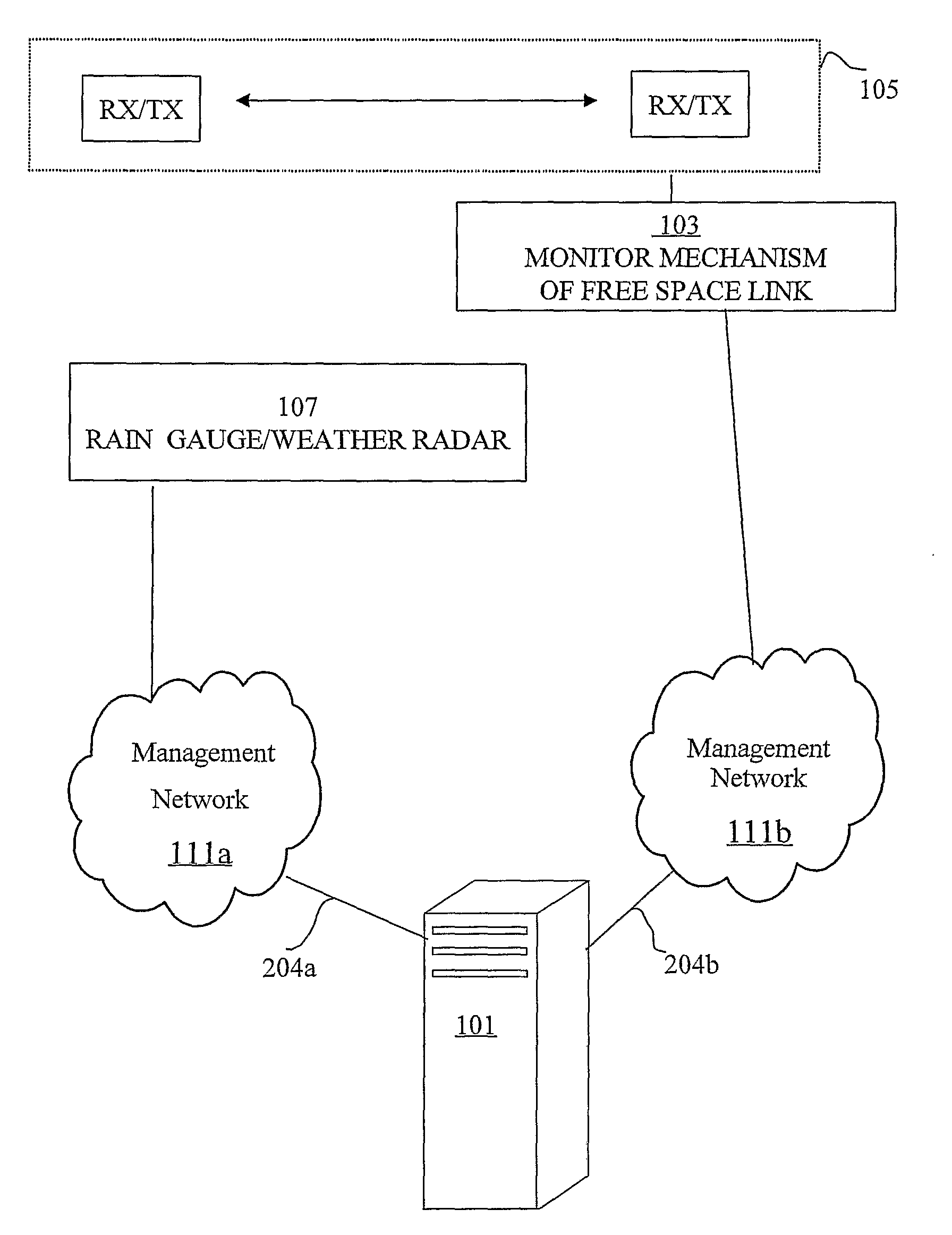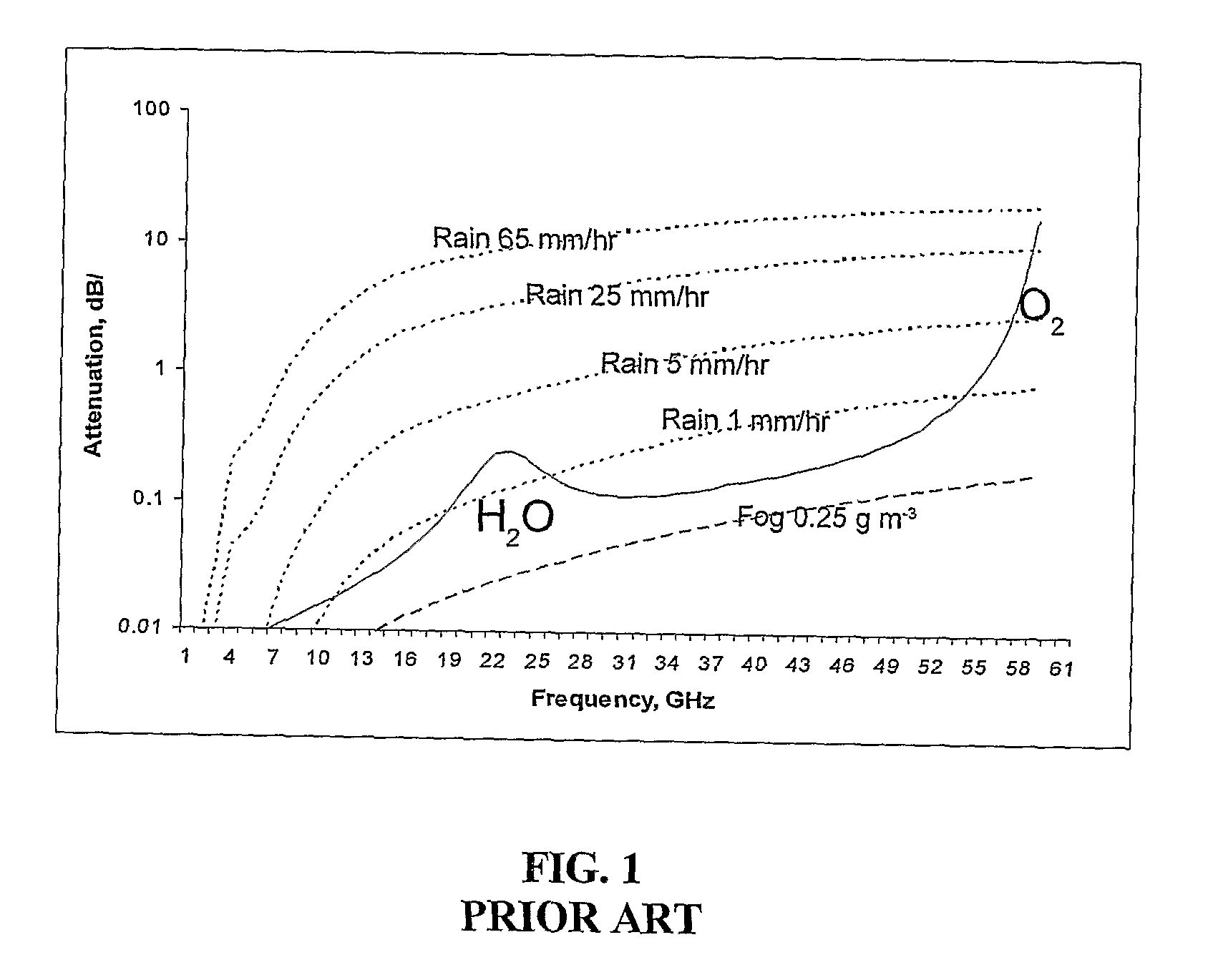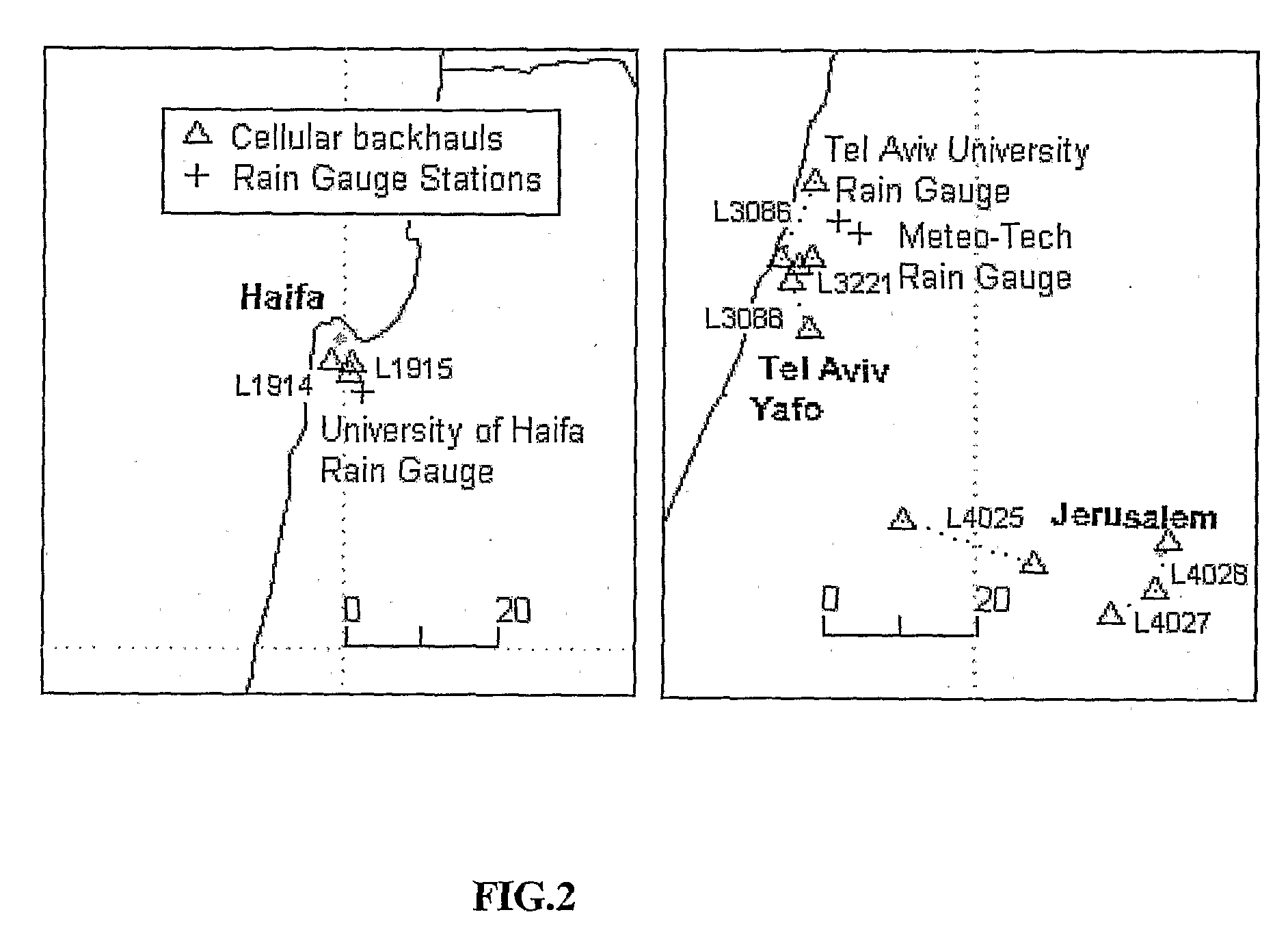Monitoring and Mapping of Atmospheric Phenomena
a technology of atmospheric phenomena and monitoring, applied in the direction of measurement devices, radio wave reradiation/reflection, using reradiation, etc., can solve the problems of high problem of topographic slope rainfall estimation, insufficient accuracy of meteorological monitoring of rainfall by radar, and high cost of dedicated weather radars
- Summary
- Abstract
- Description
- Claims
- Application Information
AI Technical Summary
Benefits of technology
Problems solved by technology
Method used
Image
Examples
Embodiment Construction
[0029]The present invention is of a system and method for mapping atmospheric phenomena and particularly rainfall rate in a geographic area using previously existing radio infrastructure distributed in the area.
[0030]The principles and operation of a system and method of mapping atmospheric phenomena, e.g. rainfall intensity, in a geographic area using previously existing infrastructure distributed in the area, according to the present invention, may be better understood with reference to the drawings and the accompanying description.
[0031]Before explaining embodiments of the invention in detail, it is to be understood that the invention is not limited in its application to the details of design and the arrangement of the components set forth in the following description or illustrated in the drawings. The invention is capable of other embodiments or of being practiced or carried out in various ways. Also, it is to be understood that the phraseology and terminology employed herein i...
PUM
 Login to View More
Login to View More Abstract
Description
Claims
Application Information
 Login to View More
Login to View More - R&D
- Intellectual Property
- Life Sciences
- Materials
- Tech Scout
- Unparalleled Data Quality
- Higher Quality Content
- 60% Fewer Hallucinations
Browse by: Latest US Patents, China's latest patents, Technical Efficacy Thesaurus, Application Domain, Technology Topic, Popular Technical Reports.
© 2025 PatSnap. All rights reserved.Legal|Privacy policy|Modern Slavery Act Transparency Statement|Sitemap|About US| Contact US: help@patsnap.com



